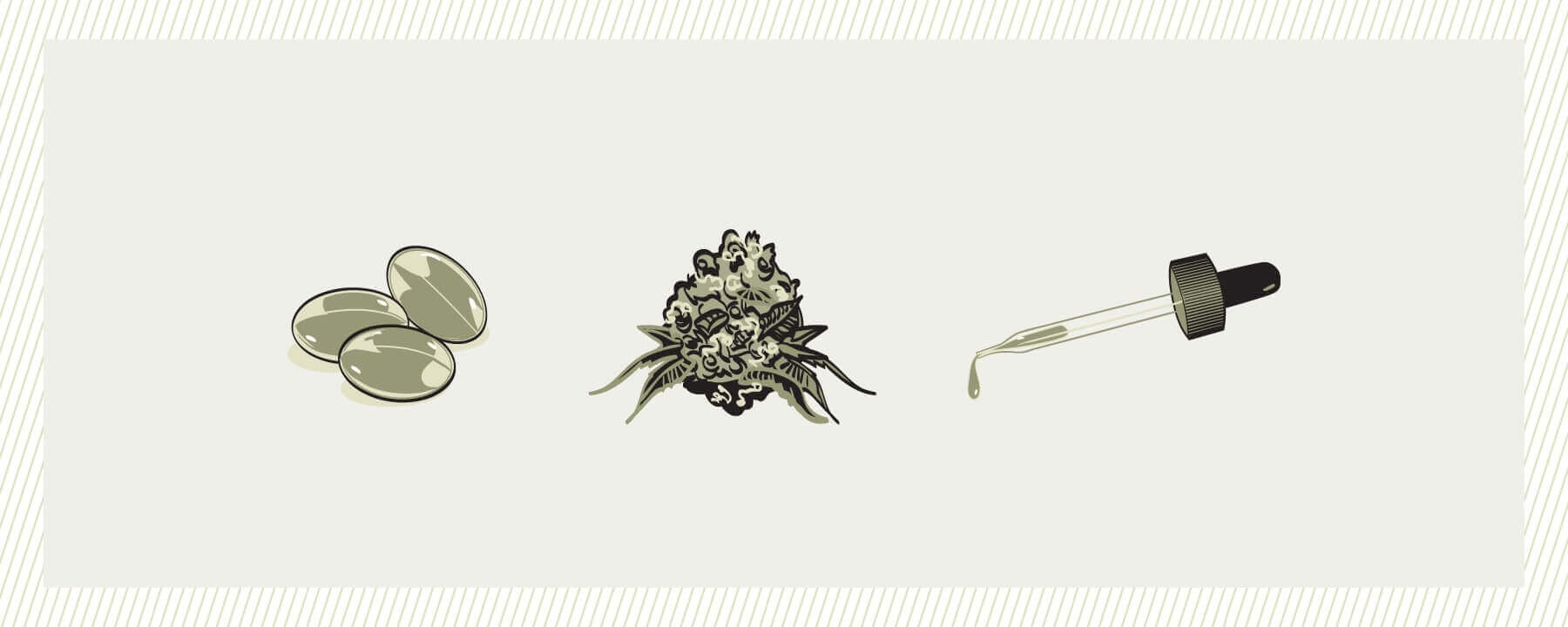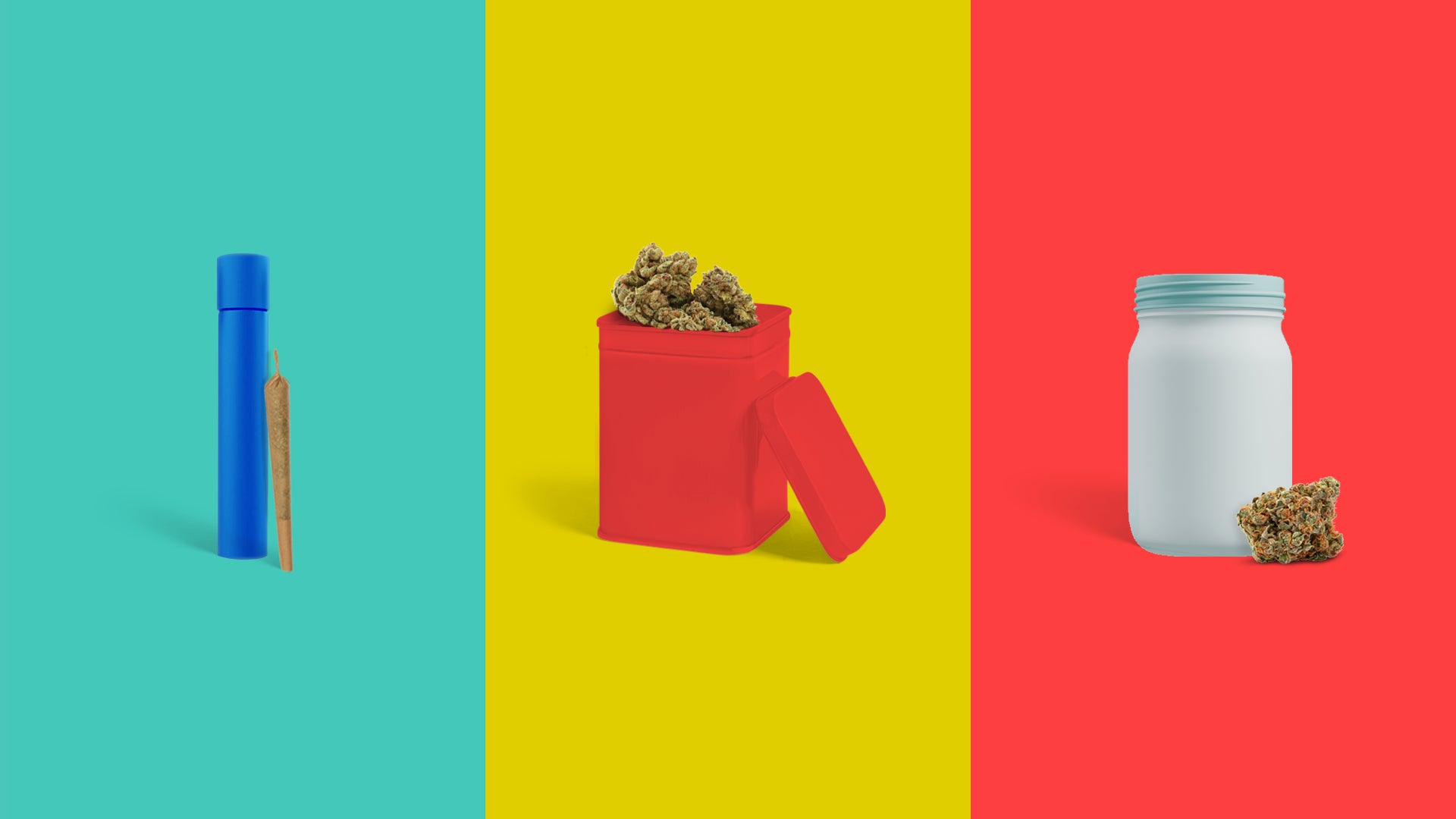Adulting is hard, we get that. Taxes? Mortgages? Cell phone plans? Too confusing. One thing that isn’t confusing, though, is how to responsibly consume cannabis. Check out these responsible use tips, and prove to everyone that you are, in fact, a real adult. As for those taxes? Well, you’re on your own.
1) Start Low, Go Slow
It’s almost as if, and hear us out, different people have different reactions to things. That’s why you should always start low and go slow if you’re new to cannabis consumption.
Reactions also depend on a number of different factors, like what type of cannabis you consumed, how you consumed it, how tired you are, and what you’ve had to eat. It’s nearly impossible to predict your reaction to different strains, so always proceed with caution if you’re trying something new.
Since we’re being helpful, we’ve got a lil’ chart for reference if you’re new to the cannabis world:
Dried Flower: 1-2 inhalations of dried cannabis that is low in THC and high in CBD
Softgel: start with just one 2.5 mg (THC) softgel
Oil: start with just one approximate 2.5 mg (THC) spritz
If you’re inhaling your cannabis, make sure you wait 15-30 minutes before trying more. If you’re ingesting your cannabis, wait a full 24 hours before increasing the amount you consume.
You’re always better safe than sorry.
2) THC vs CBD
It’s pretty easy to get lost in the world of acronyms, and we can’t help decipher all of them. But when it comes to THC and CBD we’re happy to shed some light on the subject.
THC, or delta-9-tetrahydrocannabinol if you want to get fancy, is the compound in cannabis that makes you “high.” It has psychoactive effects, and it’s responsible for the feelings many people experience when consuming cannabis.
CBD, or cannabidiol, on the other hand, is another compound found in cannabis, but it doesn’t produce the same psychoactive effects as THC. In fact, CBD can act as a buffer against some of the effects of THC.
Crazy how that works, eh?
3) Different Formats
You may be familiar with smoking joints, but there are other, healthier ways to consume cannabis too. Check them out:
Dried Flower
Okay, yes. We did just mention this. But we want to lay it all out there. You can inhale dried flower by smoking a joint or using a vapourizer. This way you feel the effects within a few moments, and they’re probably going to last six hours or longer.
Softgels
Just like most other pills, you take softgels orally. The effects will last a lot longer than if you inhale cannabis, but it will take 30 minutes to 1.5 hours for them to kick in.
Oil
Convenience is key, which is why our oils come in spray bottles so you can get the same approximate dose every time. You’ll feel the effects of cannabis oil within 30 minutes to 1.5 hours, and they’ll last much longer than if you inhale cannabis.
4) Don’t Drive High
There is literally no acceptable reason for you to drive high. None. Nada. Just don’t do it. If you still don’t get it...here are some facts:
- Because cannabis affects reaction time, attention, and decision-making in complex situations, it limits your ability to drive safely and stay stable in one lane of traffic.
- Driving after consuming cannabis raises the risk of a motor vehicle accident.
- Research has shown that many people who consume cannabis don’t realize their driving is impaired, and some people actually think it makes them a better driver [1]. These people are wrong.
So how long do you have to wait to drive after consuming cannabis? Is it like the 30-minute rule for swimming after you eat?
Experienced cannabis consumers generally need to wait at least six hours after smoking or vaping cannabis before they can get behind the wheel. Even if you are an experienced cannabis consumer, you should avoid driving on the same day you’ve consumed.
If you ingest cannabis orally, through oil or softgel, then don’t drive at all that day.
And if you’re new to cannabis, it’s best that you don’t drive at all, no matter how you’ve consumed it. Cannabis has a different effect on everyone, and it can often be unpredictable. It’s better to be safe than sorry when it comes to this sort of thing.
Note: These recommendations are generalized information provided to educate consumers with respect to impaired driving. However, cannabis consumers metabolize cannabis at varying rates, and factors such as newness to cannabis or mixing with alcohol will impact effects. These recommendations are guidelines only, and there is no certainty that following these recommendations will ensure that you pass roadside tests or are not impaired. At all times, if you are in doubt as to your impairment level, you should not drive or operate machinery.
5) How much can I buy or possess at one time?
Great question. Now we have one for you: where do you live? Different provinces and territories have different age restrictions, but recreational possession limits are the same across the board. Check it out:
6) Don’t mix with alcohol
It’s not a good idea, no matter what you may think. Consuming cannabis after alcohol can lead to extreme discomfort. We’ll repeat that a little bit louder for those who may not have heard it.
CONSUMING CANNABIS AFTER ALCOHOL CAN LEAD TO EXTREME DISCOMFORT.
Mixing cannabis with alcohol or other substances can lead to some nasty side effects. Nausea, vomiting, dizziness, and fainting are all possible results [2]. This is something new cannabis consumers should take into account and for someone who hasn’t used cannabis in a long time to consider.
7) Who shouldn’t use cannabis at all?
Glad you asked, because there are certain groups of people who should not use cannabis, or at least exercise extreme caution when doing so.
Youth
It’s not just because of the law that youth should not consume cannabis. In fact, research shows that regular cannabis use before the age of 16 can greatly increase the risk of negative health outcomes, and also impact brain development. Yikes.
Seniors
Seniors should be aware of the increased risk of falling due to the effects of cannabis. Impairment, drowsiness, and dizziness can lead to falling [3], and at an advanced age the consequences can be severe.
People living with mental health concerns
Those with a history of mental health disorders, including schizophrenia and mood disorders, should consult with their healthcare professional before consuming cannabis.
Other
Health Canada states that cannabis isn’t recommended for anyone with a serious liver, kidney, heart, or lung disease [4]. Additionally, women who are pregnant or breastfeeding should also avoid cannabis consumption.
If any of this applies to you, speak with your healthcare professional before trying cannabis.
8) What if you think you’ve taken too much?
You know your body better than anyone else does. If your health or safety become a concern after consuming cannabis, or you start to experience chest pains, persistent vomiting, or dizziness [5] causing falls, then go to a hospital emergency room immediately.
If you don’t feel it necessary to head to the ER, then just drink some water, have a snack, watch some TV, and make sure the lights aren’t too bright. It will pass.
9) New products hitting the market
No matter what form they take, innovations like vapes, drinks, and chocolate are still cannabis products and should be consumed responsibly. There are a few things that apply across all formats, so let’s cover those first:
- Don’t drive high. Seriously. Don’t.
- Start low, go slow.
- Always buy from a regulated source.
- Keep your cannabis stash locked and away from the reach of children.
Now that those are out of the way, let’s look at some more format-specific tips.
Cannabis vapes
Since vapes are made from cannabis extracts, they can be very potent (meaning they can contain high levels of THC), which is why it’s even more crucial that you start low and go slow. Even if you consider yourself somewhat of a cannabis connoisseur, make sure you’re not overdoing it when using a vape for the first time. Much like smoking, the onset time of vaping effects can be within seconds to minutes, and could last up to six hours (or even as long as 24).
Remember, there may be health risks associated with vaping that are not fully known or understood. For more, refer to this information from Health Canada.
Cannabis drinks
Our cannabis drinks are made with cannabis distillate, and are subjected to a rigorous series of innovative processes that ensure their quality and taste. This means it will take approximately 30 minutes to 2 hours to feel the effects, which could last up to twelve hours (or even as long as 24). Of course, it all varies from person to person.
Cannabis chocolate
It may be tasty, but don’t overdo it when it comes to cannabis-infused chocolate. It can take longer to kick in (between 30 minutes and 2 hours), so give it time before you have another piece.
The best way to consume cannabis is the safe way, so make sure you’re informed before exploring this new world.
- Capler, Rielle, et al. “Cannabis Use and Driving: Evidence Review.” Canadian Drug Policy Coalition, 27 Mar. 2017, p. 26.
- Scharff, Constance. “The Dangers of Combining Alcohol and Marijuana.” Psychology Today, Sussex Publishers, 2014.
- Lum, J.M. (July, 2018). Toronto: ON, Canadian Research Network for Care in the Community
- Consumer Information - Cannabis (Marihuana, Marijuana). Health Canada, July 2016.
- Consumer Information - Cannabis (Marihuana, Marijuana). Health Canada, July 2016.



